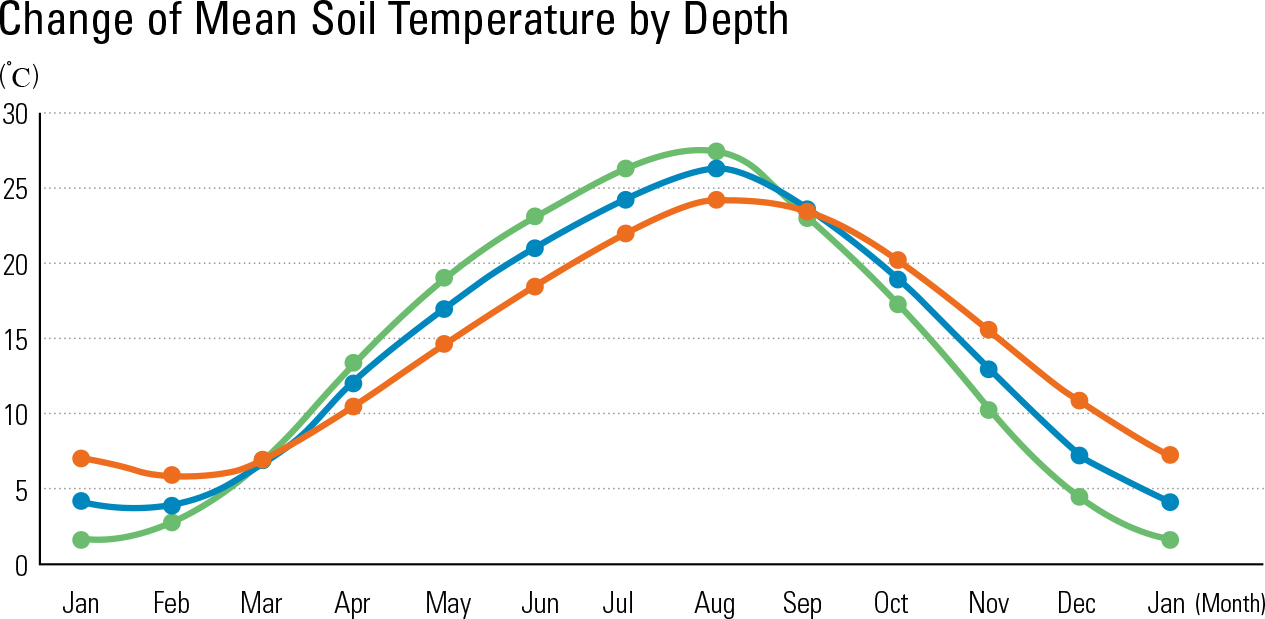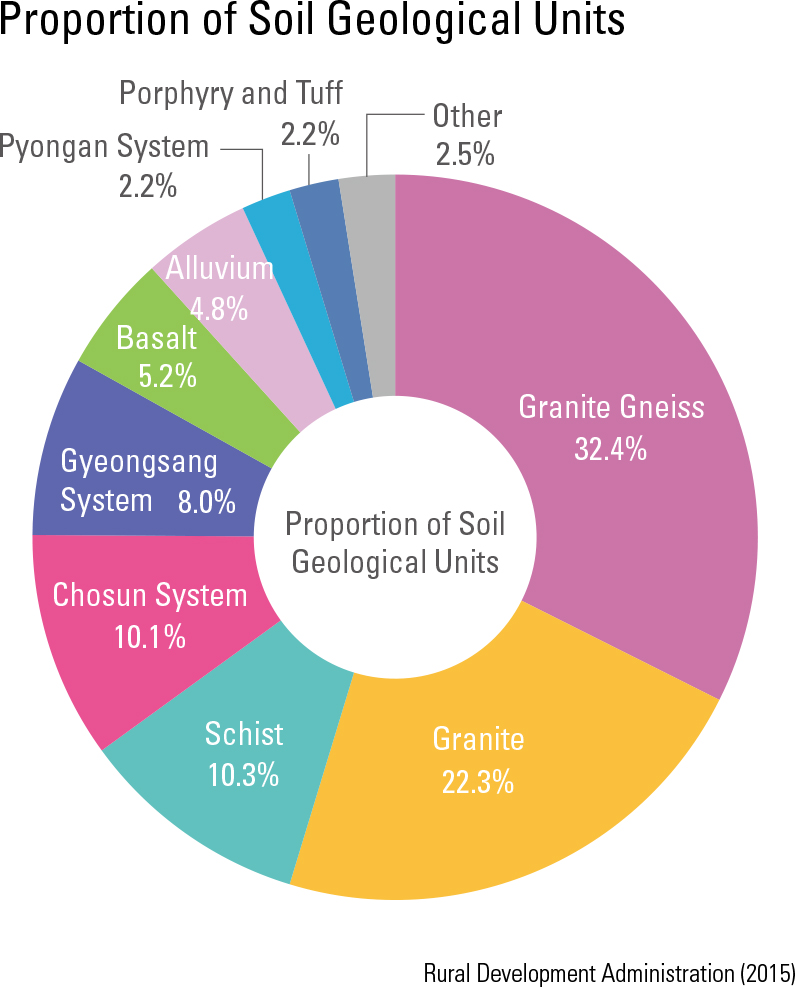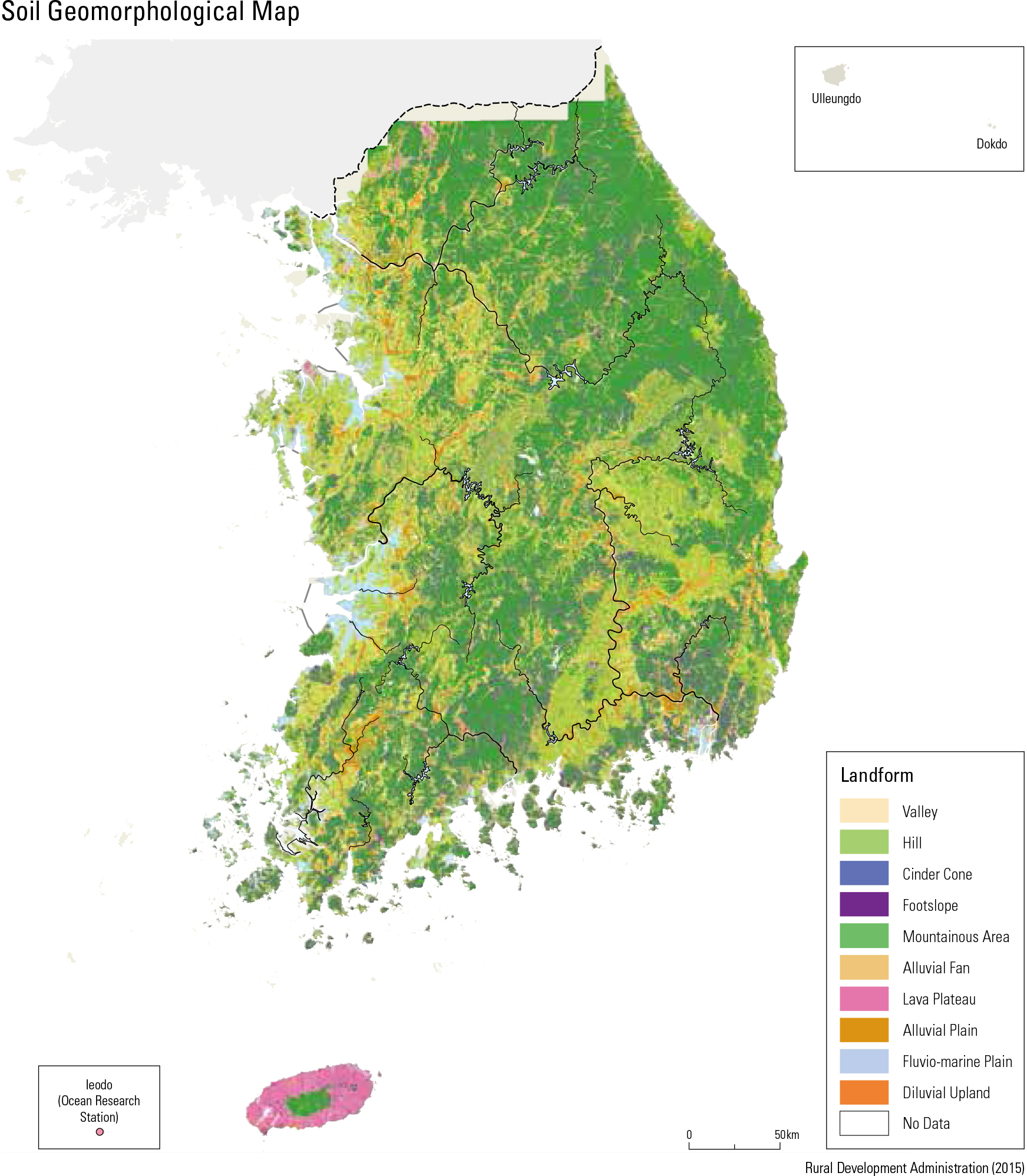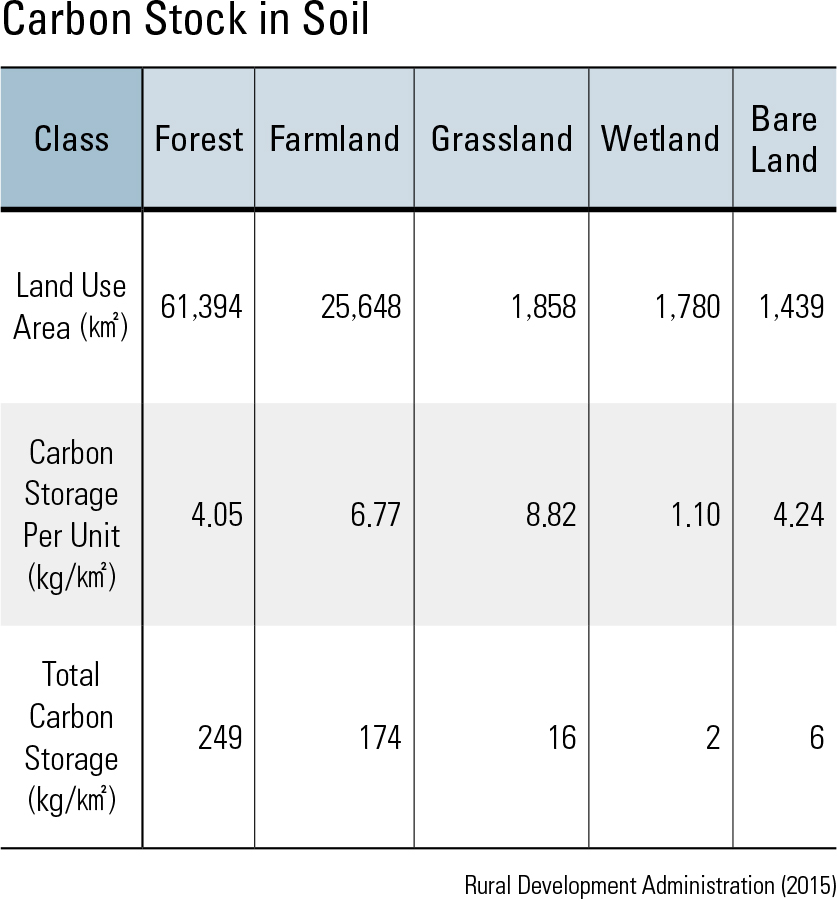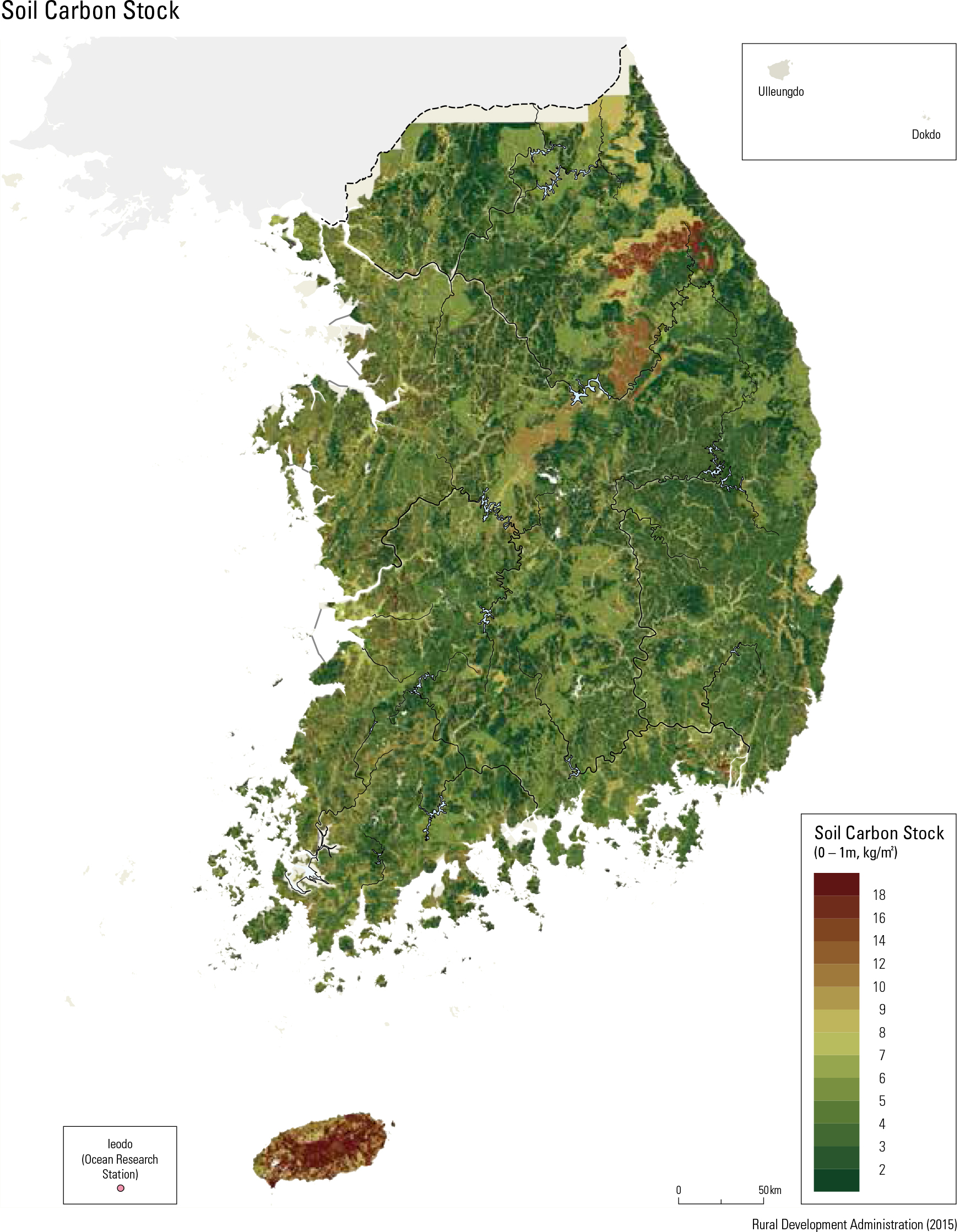English II
Climate – especially precipitation and tempera- ture – has the biggest in uence on the formation of soil. The Korean Peninsula has a temperate mon- soonal climate with four distinct seasons of spring, summer, autumn, and winter. Heavy rainfall oc- curs during July and August, which causes slopes to have shallow soil due to soil loss. Summer has an average temperate of approximately 20 – 25 ̊C with August being the hottest, while winter has an average temperate of -5 – 5 ̊C with January being the coldest. Mean annual soil temperature in Korea is 14.5 ̊C, ranging from 7.1 ̊C in Daegwallyeong to 18.1 ̊C in Seogwipo-si. According to the soil tem- perature regimes, Korean soils mostly belong to the mesic (8 ̊C to 15 ̊C) or thermic (15 ̊C to 22 ̊C) regime. The Korean mean annual soil temperature at 10 cm of soil depth (which is highly relevant to underground plant growth) is reported to be 1.6 ̊C lower than the atmospheric mean temperature. This difference varies in the summer (1.9 ̊C in August) and winter (1.8 ̊C in January), and also ranges from 0.9 ̊C in March to 2.2 ̊C in Septem- ber. The difference is more significant during summer and autumn than it is during spring.
page_2 |

